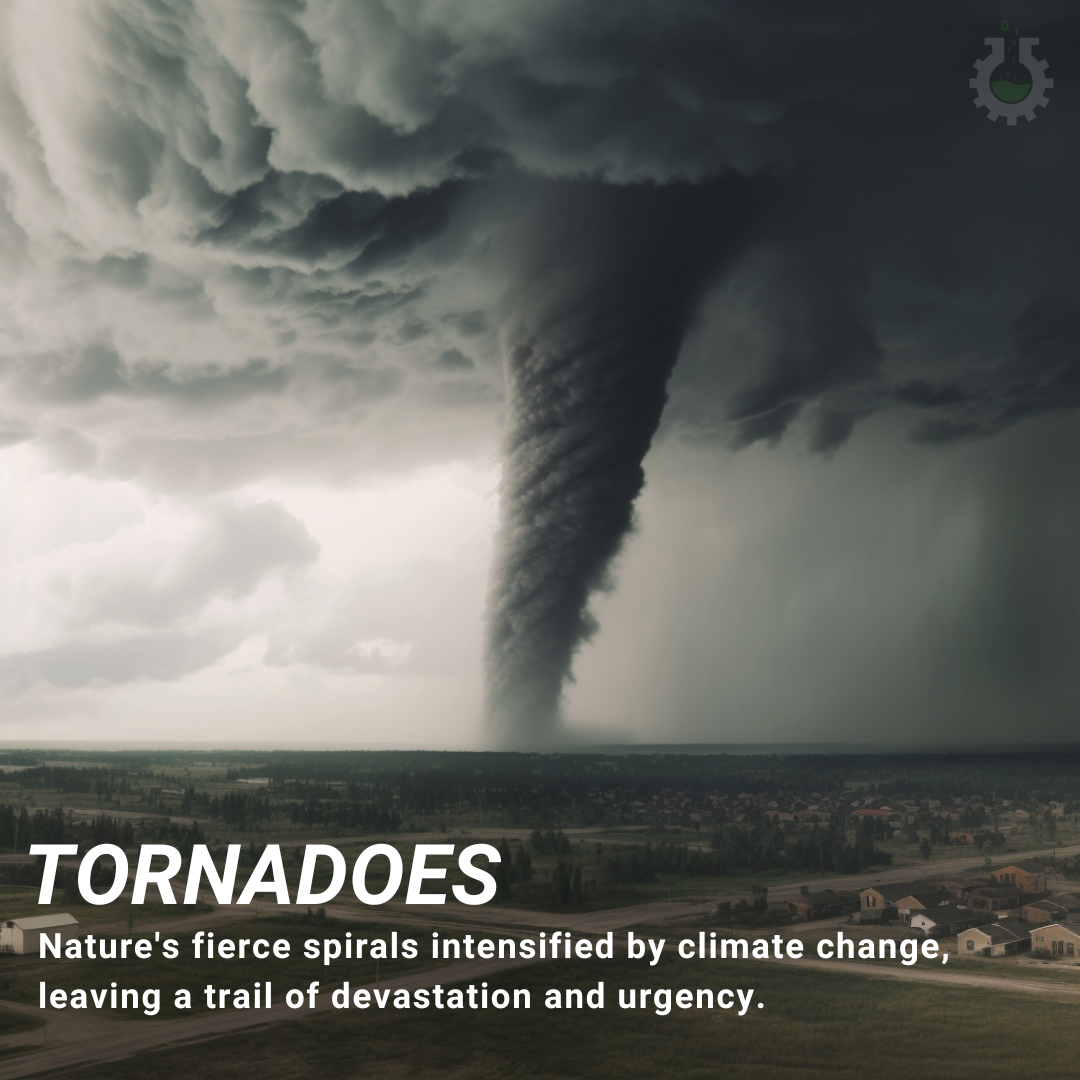August 10, 2023
Climate Change Poster Collection of the Day – Tornadoes
Book a Demo
Today’s Climate Change Poster Collection focuses on Tornadoes, often referred to as twisters or cyclones, are rapidly rotating columns of air that maintain contact with the Earth’s surface and a cumulonimbus cloud or occasionally a cumulus cloud. These natural phenomena come in a variety of shapes and sizes, but they are typically visible as a condensation funnel reaching from the base of a cloud to the ground.
Despite the fear they can instill, the majority of tornadoes are not cataclysmic in their destruction. Most have wind speeds less than 110 miles per hour (180 km/h), measure about 250 feet (80 m) across, and travel several kilometers before dissipating. However, some tornadoes can cause devastating destruction, capable of demolishing entire neighborhoods with wind speeds over 300 miles per hour (480 km/h), the highest category on the Enhanced Fujita scale.
Tornadoes are a type of violent windstorm characterized by a twisting, funnel-shaped cloud that extends from a thunderstorm to the ground. The wind speeds within these tornadoes can exceed 300 miles (500 kilometers) per hour, leading to extreme destruction in their wake.
Geographically, tornadoes are most frequently observed in North America, particularly in the central United States, in an area known as Tornado Alley. However, they can occur anywhere conditions are favorable, causing widespread hazards to human infrastructure and life.
The science of tornadoes or tornado meteorology is a specialized discipline where researchers use tools like Doppler radar and weather satellites to predict and study them. Tornadoes can be classified into various types based on size, duration, and wind speeds. The most severe of these are categorized as ‘F5’ or ‘EF5’ on the Fujita scale, a classification that indicates their potential for significant damage and devastation. Understanding these powerful natural events allows us to better prepare and respond, mitigating their destructive potential.
Discover an inspiring collection of climate change posters.



